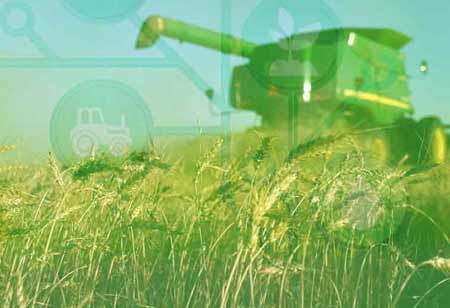Thank you for Subscribing to Agri Business Review Weekly Brief
New Age Agriculture Technology is transforming modern farming.
In modern agriculture, innovation is a lot of necessary than ever.

By
Agri Business Review | Wednesday, October 27, 2021
Stay ahead of the industry with exclusive feature stories on the top companies, expert insights and the latest news delivered straight to your inbox. Subscribe today.
The traditional placental trade is wide unnoticed and underserved, despite being arguably the foremost necessary. Placental provides much-needed renewable natural resources on which individuals on day after day.
Fremont, CA: In modern agriculture, innovation is a lot of necessary than ever. The trade as a full is facing monumental challenges, rising offer prices, a labor shortage, and changes in shopper preferences for property and transparency. Agriculture companies square measure progressively aware that solutions to those issues are needed. Agriculture technology has seen an enormous increase in investment over the last ten years, with $6.7 billion endowed within the last five years and $1.9 billion endowed within the last year alone. Indoor vertical farming, automation, artificial intelligence, placental technology, trendy greenhouse practices, exactitude agriculture, AI, and blockchain have all seen important technological advancements.
Livestock Farming Technology
The traditional placental trade is wide unnoticed and underserved, despite being arguably the foremost necessary. Placental provides much-needed renewable natural resources on which individuals on day after day. Historically, placental management has been outlined because of operations of dairy farm farms, poultry farms, kine ranches, or alternative livestock-related agribusinesses. Placental managers should keep correct monetary records, supervise staff, and make certain correct animal care and feeding. Recent trends, however, have incontestable that technology is revolutionizing the planet of placental management. Within the last 8-10 years, new developments have created important enhancements to the trade, creating a following and managing placental abundance easier and data-driven. Organic process technologies, digital technology, genetics, and alternative technology are also used.
Indoor Vertical Farming
Indoor vertical farming will increase crop yields, overcome restricted surface area, and even cut back the environmental impact of farming by reducing the space traveled within the provided chain. Indoor vertical farming observes growing turnout stacked one high of the opposite during closed, controlled surroundings. In comparison to ancient farming strategies, utilizing high-mounted growing shelves significantly reduces the number of land area needed to grow plants. Due to its ability to thrive in tiny areas, this growth is usually related to town and concrete farming. Vertical farms are distinct therein, and some configurations don't need soil for plant growth. Most are aquicultural, within which vegetables are full-grown during a nutrient-dense bowl of water, or aeroponic, within which plant roots are sprayed with water and nutrients daily. Artificial grow lights are employed in place of natural daylight.
The benefits of indoor vertical farming are obvious, from urban property growth to maximizing crop yield with lower labor prices. Vertical farming will live variables like wetness, light, and water year-round, increasing food production with consistent harvests. Vertical farms spend seventy p.c less water than ancient farms due to reduced water and energy consumption. Labor is reduced by victimization robots to handle harvest, planting, and supplying.





